Water is one of our most precious resources, yet each year many households use more water outdoors than for all other purposes. Of this, the majority is used for landscaping. It's estimated that the average suburban lawn requires 10,000 gallons of supplemental water each year. In contrast, the use of water-efficient designs and plantings results in beautiful landscapes that require minimal maintenance and water.
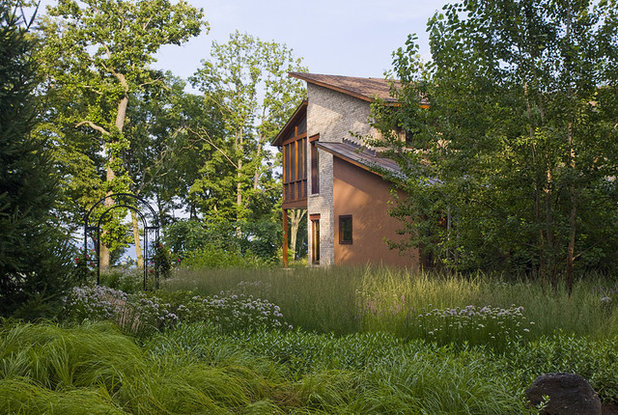
The Garden Consultants, Inc.
Native Plants Choosing plants native to your region is a good choice for gardens, as they are well adapted to your specific climate and available rainfall, so they usually don't need supplemental watering. Native plants can also be selected to create habitats that favor local birds and other wildlife.
Ornamental grasses are a great alternative to turf grass. Here, various grasses and flowers are interspersed to create a vibrant landscape. The mature deciduous tress shade the house in summer and allow the sun to warm the house in winter.
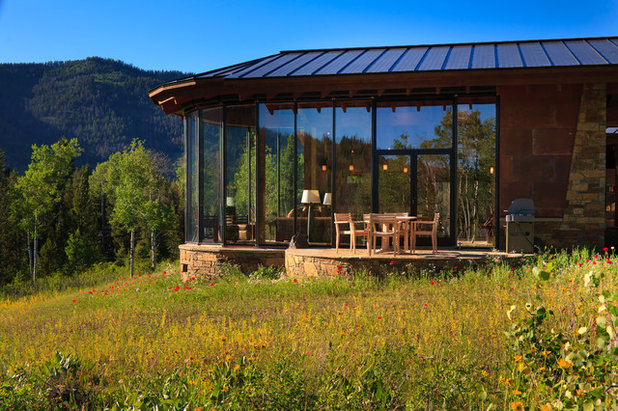
Teton Heritage Builders
Here, native plantings enhance the connection of the house to its natural setting. Lists of native plant species for your region are available from many sources — one of the best of which is your local Cooperative Extension office. Local farms and nurseries are also a great place to see and learn about native plants. Meadow seed mixes containing wildflowers and grasses are commonly available.
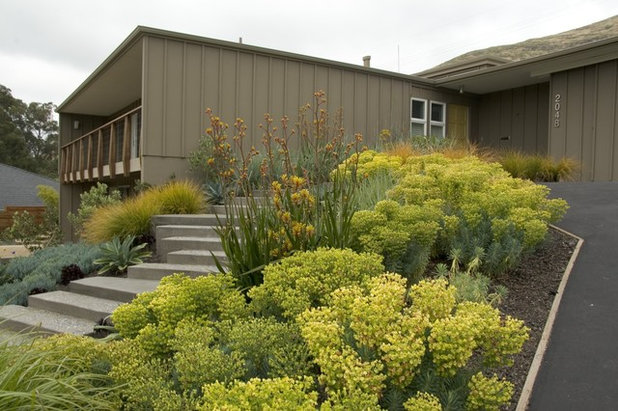
Jeffrey Gordon Smith Landscape Architecture
Drought-Tolerant Plants Drought-tolerant plants require less water and are resistant to the absence of rainfall during seasonal dry periods. These plants come in an amazing variety and can be used to create lush landscapes. Euphorbias may be used to to this effect, as shown here.
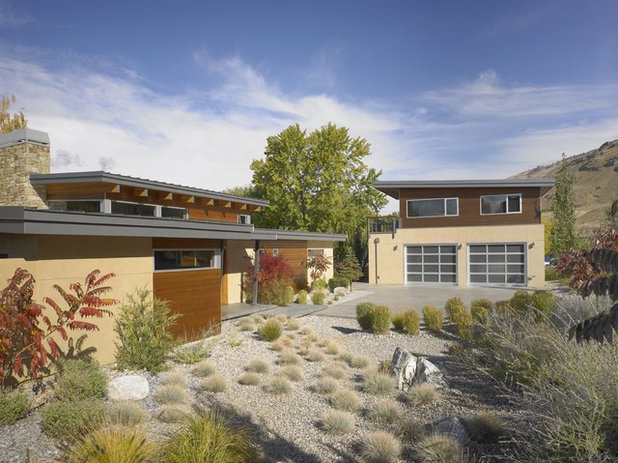
McClellan Architects
Drought-tolerant plants can be part of a minimalist landscape in arid climates. Plants from the arid Mediterranean region do well in coastal areas with dry summers and warm winters.
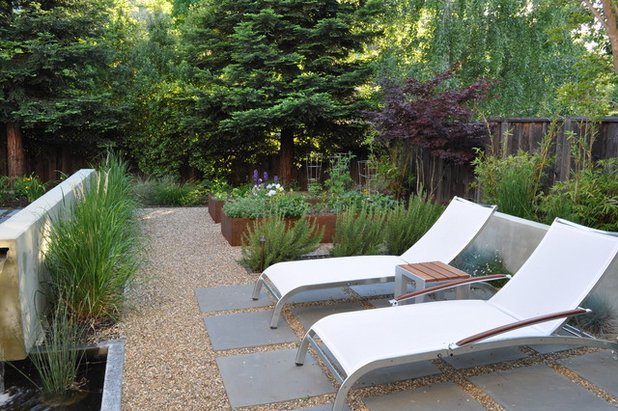
Huettl Landscape Architecture
Select plants for the growing conditions in your area. Consider soil and sun exposure of your lot. When designing, create a site plan that groups plants according to similar watering needs. Strive for three basic divisions:
- Very low water zone
- Low water zone
- Moderate water zone
Each area should be irrigated separately, according to specific water needs.
Next, see more favorite water-efficient plants.
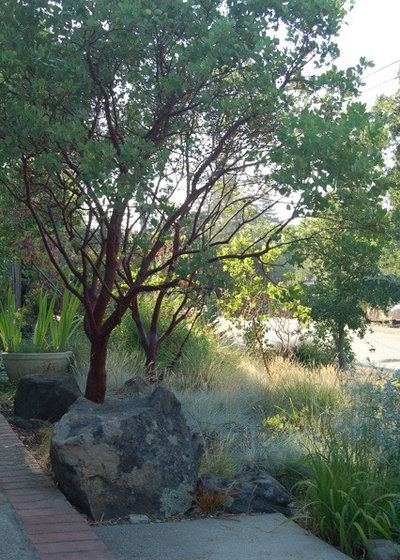
Huettl Landscape Architecture
Dr. Hurd ManzanitaArctostaphylos manzanita 'Dr. Hurd' USDA zones: 6-10
Water requirement: Drought tolerant
Light requirement: Full Sun
Mature size: 15 ft
Environmental benefits: Beautiful red bark and evergreen foliage
Native range: California
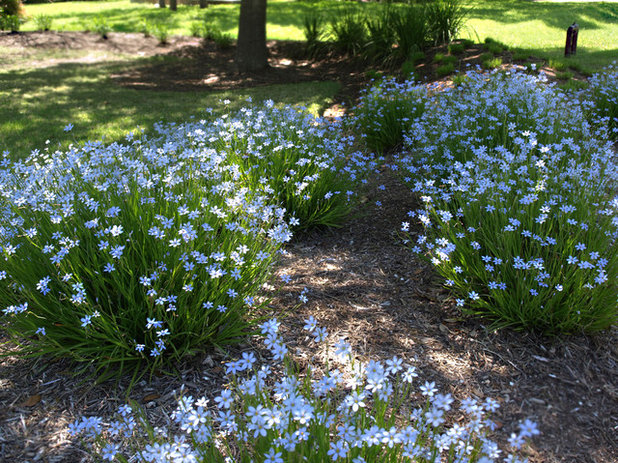
Pearson Landscape Services
Blue-Eyed GrassSisyrinchium bellumUSDA zones: 5 to 10
Water requirement: Low
Light requirement: Full to partial sun
Mature size: 8 to 10 feet
Soil type: Well-draining soil
Environmental benefits: Attractive blue flowers with yellow eye; clumps of narrow, linear leaves. The Ohlone used an infusion of the roots and leaves as a cure for indigestion and stomach pain.
Native range: U.S. Pacific coast
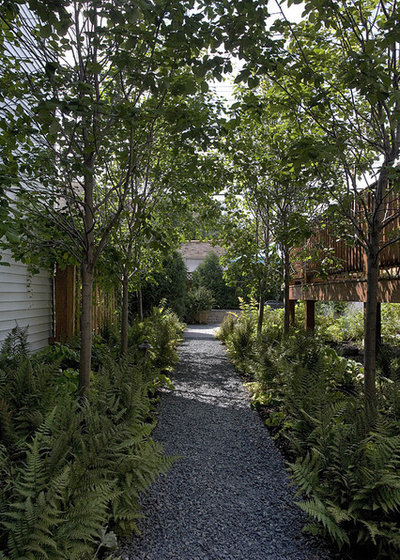
The Garden Consultants, Inc.
Sword FernPolystichum munitumUSDA zone: 4a
Water requirement: Able to withstand dry summers but prefers cool-weather moist soil
Light reqirement: Shade or partial shade
Mature size: 3-foot by 3-foot spread
Soil type: Does best in organic soils but can stand the most acidic conditions
Environmental benefits: Western sword fern spores have many medicinal uses, including relieving the pain from the sting of a stinging nettle
Native range: U.S. Pacific coast
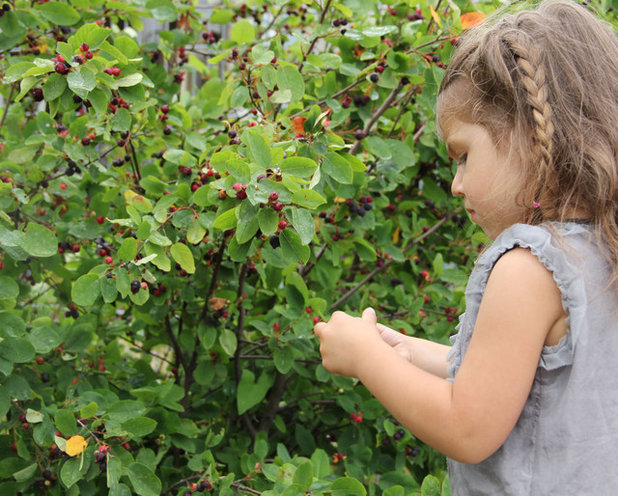
microhouse
Service BerryAmelanchier alnifoliaUSDA zones: 3 to 9
Water requirement: Has good drought resistance
Light requirement: Full sun
Mature size: 10 feet high
Environmental benefits: Nutritious fruit used fresh, frozen or processed. Wildlife value: high-quality cover and food. With a sweet nutty taste, the fruits have long been eaten by Canada's aboriginal people, fresh or dried.
Native range: Northwest and west U.S. and Canada
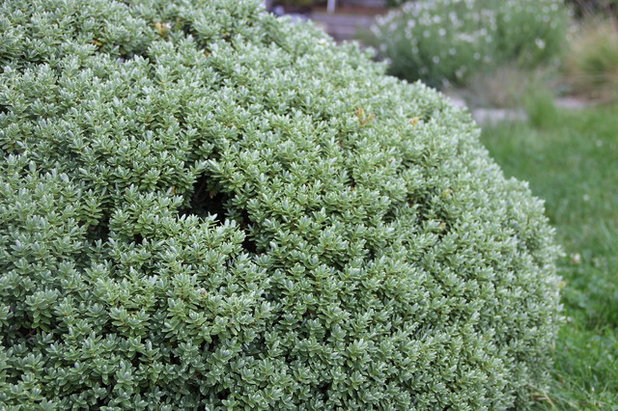 HebeHebe pinguifoliaUSDA zones:
HebeHebe pinguifoliaUSDA zones: 6 to 11
Water requirement: Most do best with regular summer water
Light requirement: Grows in full sun
Mature size: 3 feet high and 5 feet wide
Soil type: Can tolerate a wide range of soils but needs excellent drainage; appreciates a regular mulching schedule
Environmental benefits: Flowers in spring
Native range: New Zealand
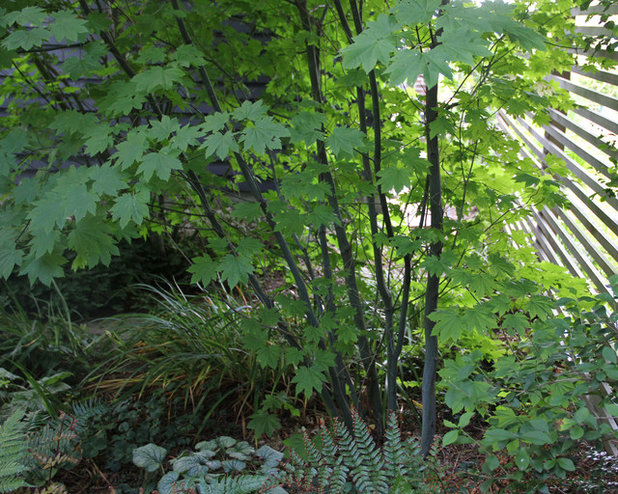
microhouse
Vine MapleAcer circinatumUSDA zones: 4 to 8
Water requirement: Medium
Light requirement: Full to partial sun
Mature size: 15 feet
Environmental benefits: Vine maple flourishes as an understory tree in moist woods with dappled shade and along stream banks. In native stands, vine maple commonly occurs with bigleaf maple, Douglas fir, western hemlock, grand fir and Pacific dogwood, with sword fern underneath.
Native range: U.S. Pacific coast
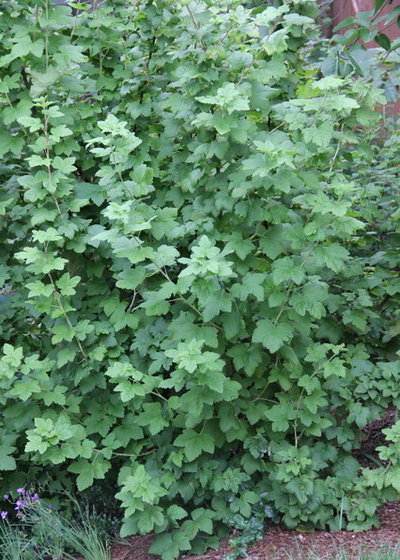 Red Flowering CurrantRibes sanguineumUSDA zones:
Red Flowering CurrantRibes sanguineumUSDA zones: 6 to 10
Water requirement: Moderate; tolerates some drought
Light requirement: Full sun or partial shade
Mature size: 6 to 12 feet high
Environmental benefits: Flowers in spring; fruit is attractive to birds
Native range: U.S. Pacific coast
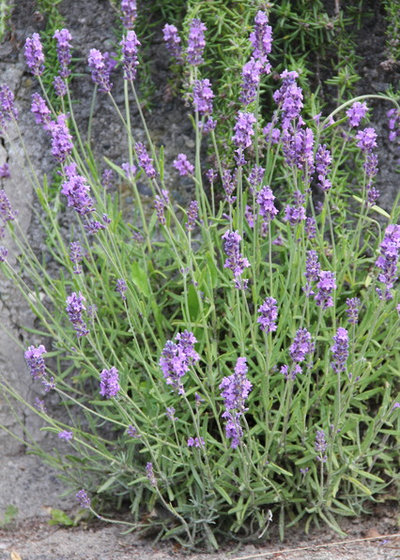 LavenderLavandulaUSDA zones:
LavenderLavandulaUSDA zones: 5 to 9
Water requirement: Drought tolerant
Light requirement: Full to partial sun
Mature size: 2 feet high and wide
Environmental benefits: Spring flowers
Native range: Mediterranean





